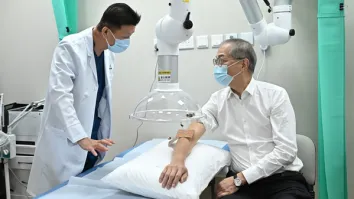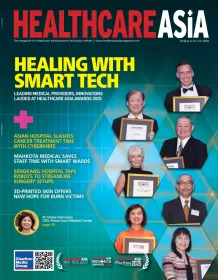
Bridging gaps for a stronger care economy in Southeast Asia
A strong system necessitates addressing gender norms that equate women as caretakers.
SOUTHEAST Asia’s notable demographic shift amidst its rising ageing population highlights greater priority towards building a strong care economy. However, workforce gender gaps pose a significant challenge in delivering equitable and accessible services.
The World Economic Forum (WEF) report titled “The Future of the Care Economy” reveals that with most care systems’ overreliance on unpaid care, such services are carried out primarily by underrepresented groups.
“Globally, women dedicate approximately three times as many hours to unpaid care responsibilities as men. This care imbalance severely impacts both the quantity and the extent of women’s participation in paid work,” said Kim Piaget, insights lead on Diversity, Equity and Inclusion at the Centre for the New Economy and Society of WEF, and lead author of the report.
The WEF report further emphasises this point by mentioning how 2 million women left the workforce during the pandemic.
“In many other economies, the proportion of women from lower-earning backgrounds with children who left the workforce was higher than that of women with higher earnings,” it said.
In line with this, Hyeshin Park, co-ordinator of the Gender Programme of the Organisation for Economic Cooperation and Development (OECD), highlighted a similar issue experienced in Southeast Asia.
“Today, it’s almost always women who provide those services for free at home. Tomorrow, asking women to do more is simply not going to work because the demand for such care services will be huge,” Park said.
For a clearer perspective, WEF cited a projection by the World Health Organisation (WHO) that by 2030, the share of the population over age 60 will rise by 40%, with the number of care recipients reaching about 2.3 billion, whereas the current global care workforce is represented by approximately 249 million women and 132 million men.
“The solution is building strong, formal care sectors; with trained and certified professionals, and with facilities like daycare centres, and nursing homes,” Park said.
The OECD mentioned this to be a notable challenge for Southeast Asia.
“Building a formal care economy demands investment and training. More fundamentally, we need to confront deep-rooted social norms that define women to be the caretakers at home,” said the report.
Economic impact
Piaget touted the care economy as an “untapped source of opportunities” in aspects such as job creation, income generation, and social mobility amongst others.
“In 2022, the WEF projected that investing in social jobs, including those in the paid care sector, could yield triple rewards in terms of GDP returns, well-paid jobs created and social mobility,” she said.
However, unpaid care services represent 9% of global GDP or an equivalent of $11t, where an estimate of nearly 2 billion people are working full time for no pay.
This ultimately leads to WEF describing many care systems as “broken” since they experience costly inequities that worsen economic strain and vulnerability to risk in the face of large-scale transformation.
“In failing to recognise care as an economic priority, countries find themselves without the resolve and the means to deliver it equitably,” the report noted.
Access to care
Another notable gap that must be addressed in this type of economy is the access to care services, particularly affecting disadvantaged groups as it hinders their opportunities for skilling, employment, social mobility, and political representation.
Piaget noted a policy gap in childcare as one notable challenge to care access, as it leaves a great majority (90.3%) of actual and potential parents without minimum care provision for around 4.2 years. “Throughout which they must find alternative solutions themselves,” she added.
Meanwhile, market solutions are not adequately addressing the gap as only a third (36%) of companies provide maternity leave. Amongst them, only 7% meet the International Labour Organisation (ILO) standards. For paternity leaves, only 31% of companies offer them.
“The lack of sufficient and accessible care is fuelling a loss of capacity and opportunity that impacts individuals first but ultimately businesses, governments and economies as a whole,” Piaget said.
She firmly asserted that achieving care equity means having to bridge care gaps across gender, age, income, and other socioeconomic divides.
A silver lining
Amidst all the challenges, Piaget believes that a collaborative care framework amongst governments, businesses, and communities can unlock the care economy’s full potential.
“While each stakeholder plays a unique role in each care system, the mounting push for effective solutions urges stakeholders to implement healthy linkages to amplify collaboration,” she said.
The report cited possible solutions in such government initiatives as city-level to nationwide systems that provide inclusive and sustainable care as well as business-led platforms that optimise service accessibility.
Meanwhile, the OECD sees a silver lining amidst the growing demand for care to promote gender equality in Southeast Asia. “It will create quality jobs for women; and second, it will also free up their time for education and jobs outside the home,” it noted.
This outlook is supported by the ILO’s data in 2021 in which international migrant workers constituted almost 5% of the global labour force and were overrepresented in service sectors where approximately 80% of women took up a majority of the roles.
“Women migrant workers are increasingly the face of the care economy, due to the growing global demand for practitioners in this space,” the WEF said.



















 Advertise
Advertise








